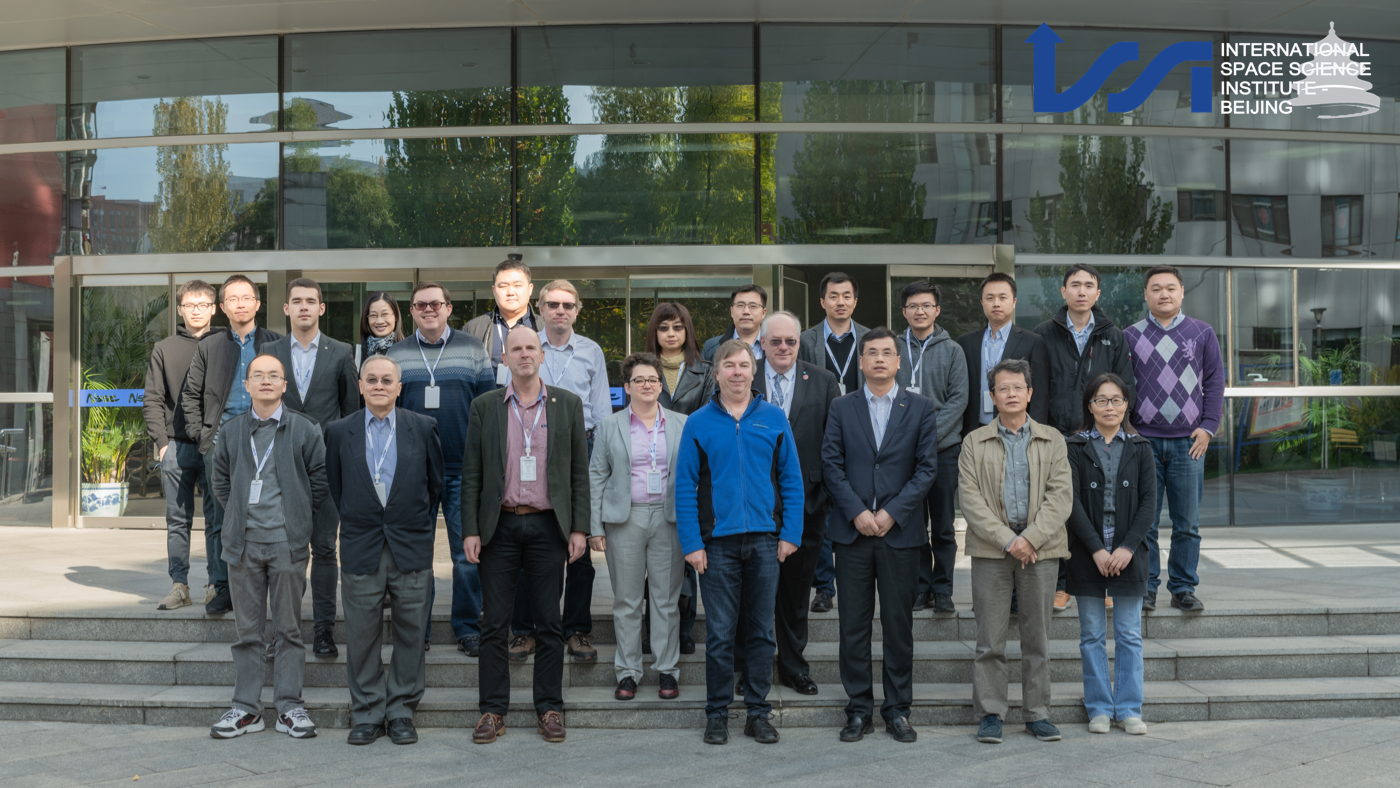To the heliosphere and beyond
ISSI-BJ Forum “Exploration of outer heliosphere and nearby interstellar medium”
BEIJING, CHINA — The forum on the “Exploration of outer heliosphere and nearby interstellar medium”, organized by the International Space Science Institute-Beijing (ISSI-BJ), was successfully held at ISSI-BJ premises on November 7-8, 2019.
Convened by internationally renowned scientists — Prof. Wang Chi (NSSC, CAS, China), Prof. Ralph L. McNutt Jr. (Johns Hopkins University, USA), Prof. Robert Wimmer-Schweingruber (University of Kiel, Germany), Prof. John D. Richardson (MIT, USA), Prof. Li Hui (NSSC, CAS, China), and Prof. Maurizio Falanga (ISSI-BJ, China) — the event attracted more than 20 experts devoted to the study of heliophysics, space physics, and space exploration.

Group photo of the forum participants
Symbolically marking the one-year anniversary of NASA-led Voyager 2 mission since it first entered the interstellar space on November 5, 2018, the forum represents one of the most relevant activities held at ISSI-BJ in 2019 thanks to the groundbreaking studies thoroughly discussed during the two-day meeting.
As a matter of fact, the talks aimed to identify some key problems related to some still uncharted territories such as heliosphere, the interstellar medium, our solar system, as well as their interactions. “The forum underlined the exciting science that is waiting for us "out there" in the interstellar space, but also what is yet to be discovered on our way to the edges of our home in the galaxy” commented Prof. Wimmer-Schweingruber.
Scientists were also faced with the complexity of a new interstellar mission proposal, i.e. the Interstellar Express (IE). Following the 2014 Scientific Pioneer Program of Space Science of the Chinese Academy of Sciences (CAS) as well as the 2018 Xiangshan scientific conference, key questions related to such interstellar undertaking were tackled:
The Voyager spacecrafts are doing an amazing job, making the first observations of the heliosphere's boundaries and interstellar medium, but they are nearing the end of their lifetimes. The forum started planning to send a spacecraft to true, undisturbed interstellar space.
Prof. John D. Richardson, MIT, USA
The mission, whose probes are meant to move in two opposite directions — towards the “nose” of the heliosphere as well as towards its “tail” — is ought to be launched in 2025 and its significance also lies in its potential for the understanding of the interactions between the hot, low-density plasma of the solar wind and the cool, higher-density plasma of the interstellar space. As highlighted by Prof. Wimmer-Schweingruber, “the mission would be of great scientific interest to the broad international community as it reaches beyond traditional heliophysics to plasma physics, astrophysics, and fundamental physics”.
After a preliminary introduction to the forum and its goals, researchers were first confronted with the latest results yielded from the investigations on the outer heliosphere and the interstellar medium. These included presentations on the magnetic field (Prof. Izmodenov, Lomonosov Moscow State University, Russia) as well as galactic cosmic rays (Prof. Florinski, University of Alabama at Huntsville, USA, and Prof. Luo Xi, NSSC, CAS, China) in the outer heliosheath, and on the heliospheric shield (Prof. Merav Opher, Boston University, USA).
As the second day started, the interstellar mission became the pivot of the discussions, its scientific objectives were examined (Prof. Zong Qiugang, Peking University, China, and Prof. Wing-Huen Ip, National Central University, Taiwan), and payload suggestions were brought forward, such as ENA imager(s), plasma- and magnetic field instruments, and L-y spectometer, among others. Last but not least, the far-reaching and well-promising approach of this mission has attracted the interest of the international scientific community, leaving the call for worldwide collaboration still open:
This forum represents our first attempt to organize an international gathering to meet with American, Russian, and European experts, and it is by no means a good start for the future of the IE mission. There is no doubt that in future, China will continuously cooperate with other space powers towards the success of this interstellar mission.
Prof. Guo Xiaocheng, NSSC, CAS, China
The exploration of the outer heliosphere and the interstellar space is an ambitious goal which arises from the innate tendency of mankind towards innovation. Our Chinese colleagues are actively participating and contributing to this mission with knowledge and wisdom and thanks to ISSI-BJ, the groundwork for international collaboration could be laid. I am looking forward to reaching a deeper understanding of the ‘heliospheric mysteries’ and to a brighter future for space exploration.
Prof. Li Hui, NSSC, CAS, China
As an outcome to be shown to the international scientific community, the results of the forum’s discussions will be published in the ISSI-BJ Taikong Magazine, a publication accessible also to non-experts. The issue will be shared with the scientific communities and it will be also made available online on ISSI-BJ website.
---
For more information, please contact ISSI-BJ PR and Editorial Manager Laura Baldis: laura.baldis@issibj.ac.cn
|